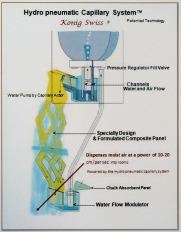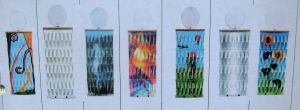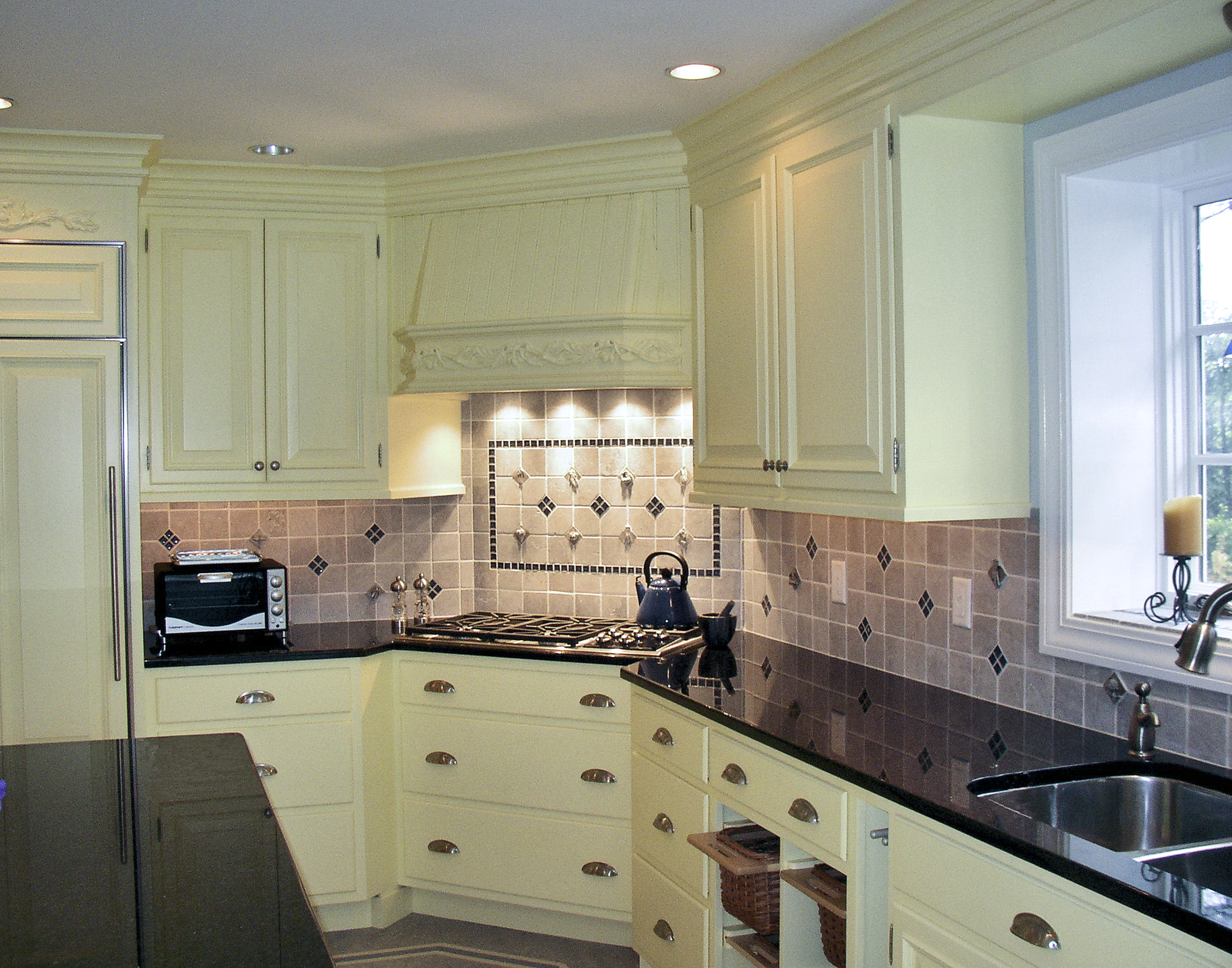Posts in Category: eco-friendly humidfier
Eco-Friendly Interior Finishes for Kitchen and Bathroom Renovations
This past month I participated in the Hamilton Wenham Green Speaker Series which took place at the Hamilton Wenham Public Library. My focus was Eco-friendly interior finishes for kitchen and bathroom renovations. As I was preparing this presentation, it became evident that I could stand before my audience and provide them with factual information presented in a power point format or I could share my personal story of how I became interested in specifying less toxic finishes for my clients along with the facts. The later seemed to offer a more interesting venue.
I have shared in a past blog about how I became ill after moving into two of the homes we had lived in. The focus of that blog was about the outgassing of VOC’s (volatile organic compounds) when paint dries. (Smelly walls, what’s that all about? July 2009) Upon learning about VOC’s and outgassing with respect to paint, I was then interested to find out what other items may have contributed to my illness. Through the process of Google searches, speaking with experts in the field of Green Design and reading accounts of similar chemical sensitivities, I was on my way to learning how to create healthier environments for myself as well as my clients.
The first home my husband and I purchased was in Lynn, MA in the late 1980’s. It was a Victorian that had been gutted and was in the process of being renovated when we first saw it. Not only did it have fresh paint on the walls, but there was new nylon carpeting put down with toxic adhesives, restored wood flooring with polyurethane, plastic laminate kitchen and bath cabinets and countertops with formaldehyde and toxic glues. I was ill for 3-6 months. The doctors could not figure out what was wrong with me. Could it be sinus or neurological? They gave me medication – but I think my system eventually just adapted to the environment.
Our second home was in Georgetown, MA in the early 1990’s. It was new construction. Of course, we were excited to have a new home! What we didn’t realize was that I was going to get sick again for an extended amount of time due to the finishes applied throughout this home as well. Since it was new construction, we also had a very tight house. The only difference between this home and our previous one was instead of newly finished wood floors, we had vinyl flooring and adhesives to deal with. We had the same plastic laminate cabinets and counters, nylon carpeting on the second floor bedrooms and lots of painted walls.
In 2000 we move to Hamilton, MA. The home was a Victorian summer home that had been converted to year round living in the early 1930’s. When we moved in – nothing had been done to the interior of the house for years. There were painted plywood cabinets in the kitchen, beautiful hardwood floors throughout that had an older finish on them, the paint on the walls was several months old and there was ceramic tile on the floors of the bathrooms. I was healthy for the first time after moving into a new home! I was too busy at the time to put much thought into questioning why I wasn’t getting sick with this move. That light bulb would go off in a few years.
When I decided to begin my own interior design practice focusing on residential design, I knew that I had wanted to work with clients to provide beautiful and functional spaces for them to enjoy, but I also knew there was something more. In the beginning, I wasn’t quite sure what that was, but I trusted that eventually it would come to me. The aha moment came when I started hearing about Green Design and how it was more than just specifying sustainable products, it was also about specifying healthy products. That was it: I would learn as much as I could about how to bring healthy products into my clients homes. Not only in terms of finishes, but cleaning products, fabrics, air purifiers and humidifiers and even food. (I have been a work for share/CSA member for 8 years at Green Meadow Farms in Hamilton, MA. They share with the community organic produce/meats and lifestyle choices)
Through my interior design business, I have had the privilege of designing and working to date on two Green Kitchen renovations. Here is a listing of some of the features we were able to introduce into these spaces (they go beyond just finishes): Energy Star appliances, organic wall paint, no VOC (volatile organic compounds)paint, recycled glass/ceramic wall & floor tiles, LED (light emitting diode) for under cabinet and cove lighting, energy efficient dimmable CFL (compact fluorescent lighting) lighting, Richlite (compressed paper based) countertops, poured concrete countertops, radiant heat under the flooring, cabinetry: FSC (Forest Stewardship Council) cherry and maple cabinetry, with a water based natural finish, no VOC painted finish on office, bathroom & island cabinetry, flooring: Marmoleum, linoleum product, backsplash: reclaimed tumbled stone with recycled metal and crushed glass accent tiles.
My intention is to share the information I have gathered with my clients, friends and family. There are so many products demanding our attention, why not purchase those that are not harmful to us nor our environments. I will be posting the video recorded at the library within the coming weeks that shares more information about specific companies and their products. If you are interested in viewing it now, go to: HWCAM.org, type in Lisa Kawski, it will bring up my show, click on the title, it will show the schedule, click on WATCH NOW.
As always, if you have any questions regarding green interior finishes, please feel free to contact me design@lmkinteriorsltd.com or call (978)335-1140.
let’s talk about the weather…..
This past month was an exceptional month for weather. I can not recall a wetter, grayer or more depressing month in my past. They say we had a total of 27 out of 30 days with no sunshine. That was enough to push whatever happy demeanor I was maintaining to the edge. What is one to do when anticipating warm, sunny weather in June only to feel the need to turn the heat back on and purchase a therapy light? It actually allowed me to solidify a partnership with Konig Swiss ®, a company from Switzerland that manufactures an eco-friendly, non-electric humidifier; and become one of their first American distributors.

In my opinion, this unique design not only serves a functional need, but also provides a visually interesting addition to one’s environment. This product was developed by a Swiss native known as a designer, inventor, engineer and environmentally conscious entrepreneur. It first appeared at an international trade show in Europe in 1998. It has received several gold medals from Geneva for outstanding innovative design. Konig Swiss ® launched the sale of the humidifier in 2002 and has had sales in Switzerland, Germany, Austria, Latvia and France. Within this last year (2008) they began distribution in the United States and Canada through their North America office. This isn’t your typical humidifier that you buy at Wal Mart. No large containers or reservoirs that need to be filled in your bathtub. No fake, ugly brown wood grain consoles. Once the humidifier is mounted to your wall, all you have to do is fill the plexiglass globe every two days (perhaps every third day, depending on the moisture level required in your home).
How does it work?
The process is called Hydro Pneumatic Capillary System (patented technology). The humidifier uses gravitation and the patented capillary system to power the device. The dryness of the environment’s air dictates the level of evaporation of the water and the speed of circulation into the air. The water pressure in the tank is regulated by a pressure fill valve that allows the water to flow through the tubing to the water flow modulator. The humidity actually flows out from the bottom of the humidifier and sinks into the room and then is carried up towards the ceiling and the surrounding space through movement in the area. One unit covers approximately 1200 square feet (depending on the humidity level of your environment).

The part that appealed to me immediately was the specially designed composite panels that you can order in seven different designs. There is one with sunflowers, a waterfall, a child’s themed playground, platinum gray, pearl white, a contemporary artsy theme, and a very bold colorful design. They offer a design that can fit in any decor, and will be coming out with more designs this coming year. The overall height is 41 1/2″ inches (to the top of the globe) x 15 3/4″ wide x 4 3/4″ deep. Total weight with water is 6.9 pounds.

Eco benefits:
- No electrical costs
- Quiet – no electrical noise
- Does not produce dust vapor
- No mold
- Carbon neutral
- Easy to clean
Important Advantages:
- No electrical costs
- High evaporation capacity – enhanced by the special cut of the composite panel
- No distribution of germs
- No risk of tripping over unit or cords of unit
- No risk of burned fingers as there is no hot evaporation
- Easy to refill with wall mount accessibility
- High quality design and manufacturing
As you can tell, I am very excited about this product and bringing it to the attention of my clients, friends and family. I think it offers an incredible alternative to the humidifiers that we have all purchased and brings a unique design and innovative technology that aligns with my philosophy on green design. If you are interested in learning more about this product you can visit www.konigswiss.com . You can also contact me at design@lmkinteriorsltd.com for pricing and shipping information. As I have been sharing this product over the last month, I find myself saying, “It’s Swiss made, it’s got to be good!” Now that the sun has finally come back to us, I look forward to using this product come the true fall season.




